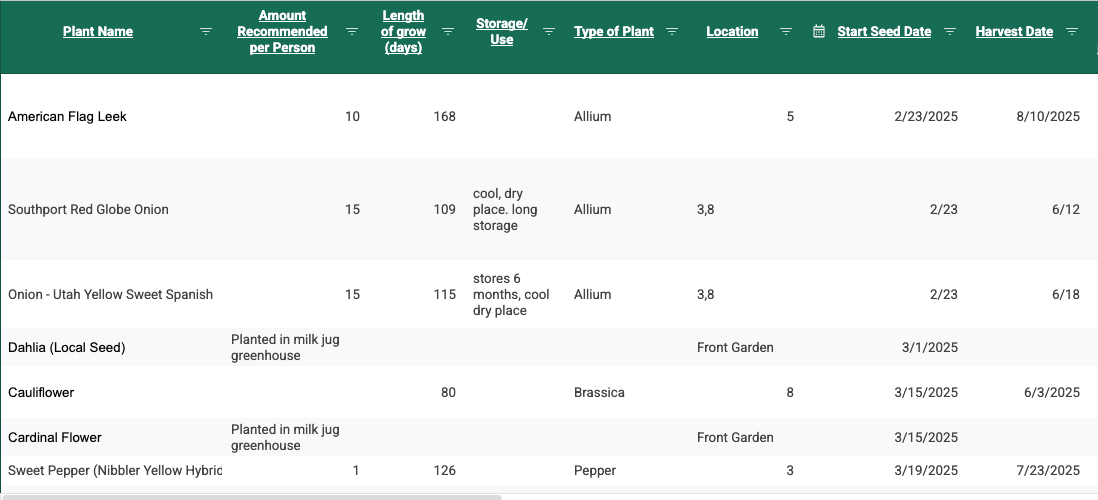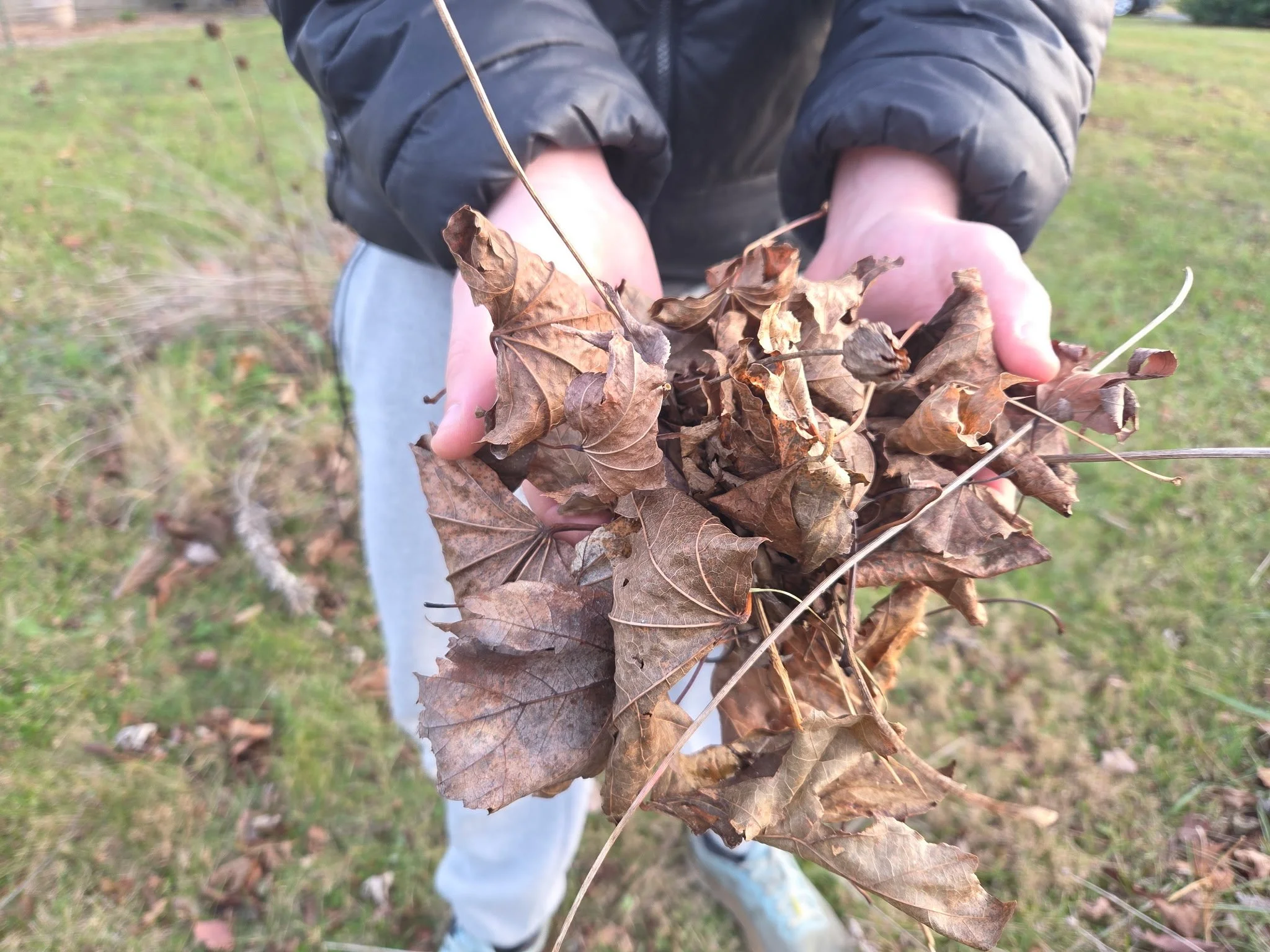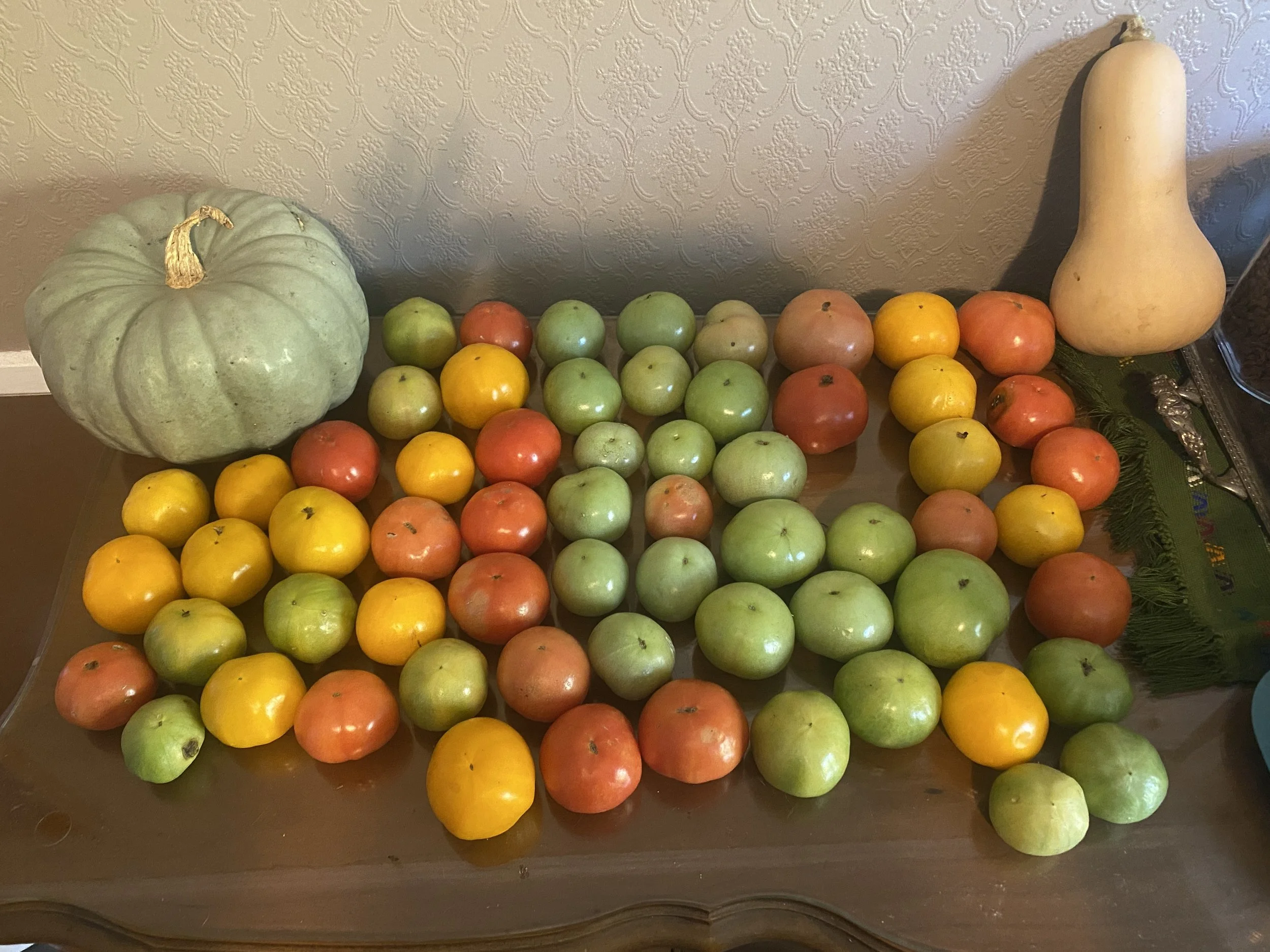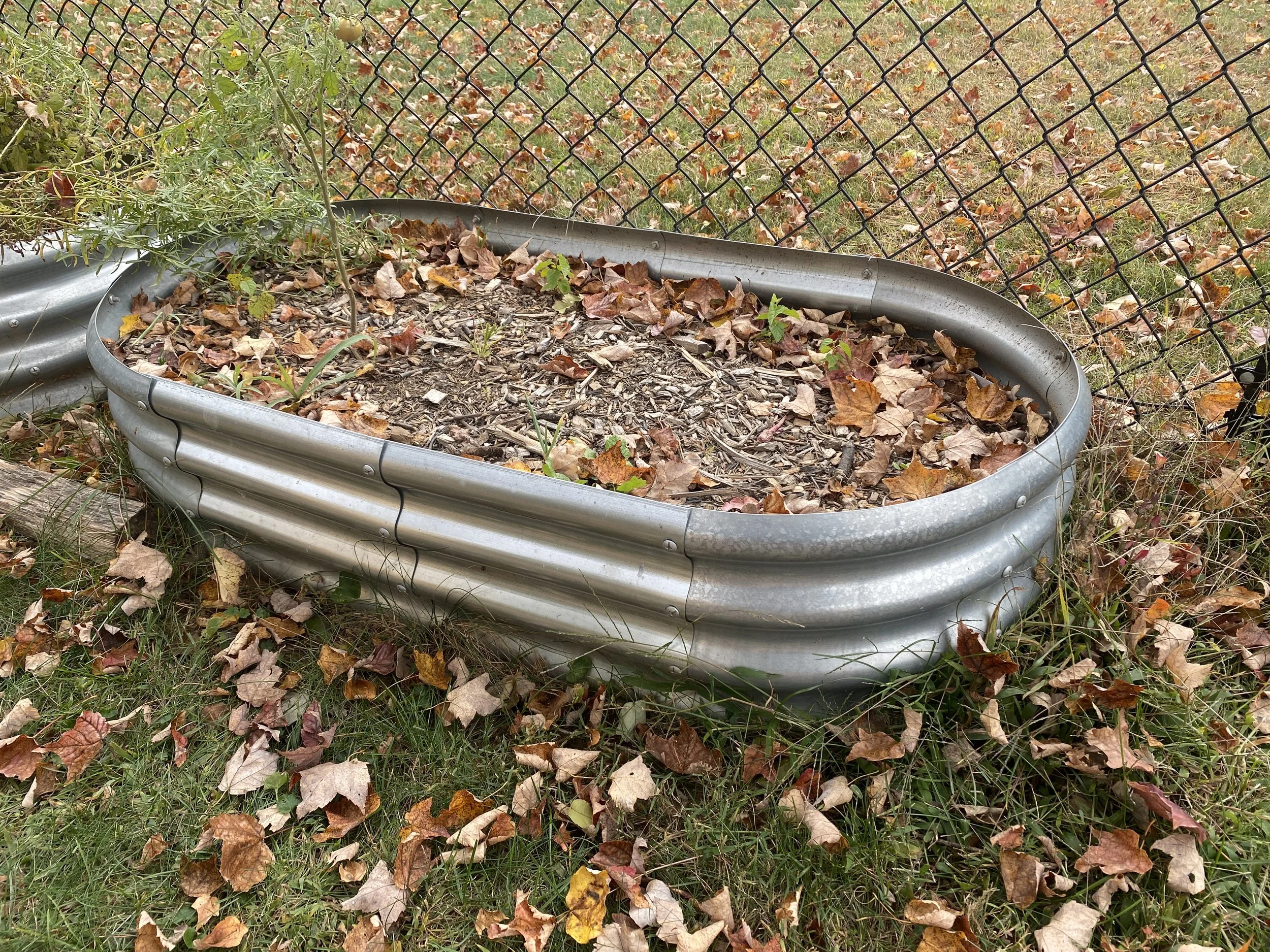Small Space Gardening: How to Maximize Your Harvests with Less Space
When you think of growing your own food, you might think about acres of property. In reality, you can grow a lot of your own food with very little space. Our gardening journey began when we purchased a 0.33 acre property a few years ago. We started out small, with a few fabric and plastic pots. Now, half of our property is garden space and we produce a large portion of our own food. It has taken us years to establish these garden spaces, but each time we are working on a new space, we start by planning out the space, finding companion plants, and using vertical space.
Plan out your garden
The easiest way to maximize a small space is to plan out where you’re going to plant everything. In our zone, we typically have plants growing outside from March through November. By planning out what will go in each garden bed and patch, we can maximize our harvests each season, reduce wasted space, and ensure all of the plants have conditions they can thrive in. Below are three steps to help you plan your garden space.
1. Measure and map out your space
Measure out the space you intend to plant in. Almost any space can be turned into a garden space, whether it’s by adding a raised bed or pot or planting directly into the ground. We use a variety of methods in our garden. We have several in ground spaces, 8 raised garden beds, numerous fabric bags, plastic and ceramic pots, and vertical planters for movable growing space. You will want to amend your soil with compost, regardless of which method you choose, to ensure your plants have the nutrients they need.
Once you have your space picked out, measure each planter or garden space and draw it out on a piece of paper or online. We keep an Excel spreadsheet of our garden plans and create a new tab for each year so we can reference or re-use the information.
2. Choose Your Plants
When choosing your plants, the first thing you should always consider is what you and your family like to eat. It’s great to experiment with new plants and we always include a few new plant varieties each year, but you want the base of your plants to be things that you already know you will enjoy eating.
Some plants can grow much larger or take up more space for their roots than others. Prioritize your favorite fruits and vegetables to be the base of your planning. After that, consider some compact varieties or smaller plants. Some of our favorite compact plants include Spacemaster cucumber, Patio Baby eggplant, and Nantes carrot. We also like to include a lot of cherry tomatoes, snack peppers, and lettuces because the plants tend to be smaller in general.
For each plant you choose, look at your seed packet or search the plant online to see how large the plant will grow to be. Draw and label these plants on your mapped out space and start to fill in the empty spaces. Consider adding herbs, spices, onions, lettuces, and other shade tolerant plants in the small spaces that are left between your larger plants. Keep some space open, especially on the borders, to add in companion and pollinator friendly plants.
3. Create a Schedule for Planting
Once you’ve identified all of the plants you want to grow, create a list of them. For our tracking, we create a table in Excel that includes the plant name, the number of days to fruit, the ideal planting conditions, and the start and end date for each plant. By tracking this information for each plant, you can ensure your plants grow in their ideal conditions and you know when to plant and when to harvest.
For each plant you want to grow (or for each plant you purchase from a store), list the date you will start the plant and estimate the harvest date based on your seed packet or information online for that plant variety. For example, if I purchase seeds for a sungold cherry tomato, the packet tells me it will produce fruit in approximately 65 days. Let’s say I start my seeds on May 1. I can estimate that the plant will fruit around July 5. This means my plant will be close to its maximum size by early July. I can use that information to decide when to start the plants around that sungold cherry tomato. I may want to start basil seeds next to this plant before it gets to its full size, so it has more sunlight in the beginning.
Follow this process for all of your plants and start to fill in any gaps. You may have a garden space where all of your fruits and vegetables will be done producing by August. You can add in more plants that will do better after this date. For the example above, after my sungold cherry tomato is done producing, I can use the same space to grow cooler weather plants, like broccoli and kale. By planning out the date each plant will be growing, you can harvest more from one space, maximizing the total harvests you get in a season.
Companion plant
Look for plants that benefit each other (and avoid ones that don’t)
Companion plants are ones that benefit each other by being planted near each other. They may benefit other plants by repelling pests, attracting pollinators, providing shade, or improving soil health. Some of our favorite companion plants are:
Tomatoes and basil
Corn, beans, and squash or melons (also known as the three sisters method)
Cucumbers and dill
Tomatoes or peppers and onions
Use trap crops in your borders
Trap crops are used to intentionally attract pests away from other plants. They can be beneficial when planted in the borders of your beds because, if maintained properly, they can reduce insect damage to your vegetables by trapping the pests before they can get to your vegetables. Some popular trap crops include marigolds, nasturtium, radishes, and sunflowers.
Pro tip: Even though trap crops are meant to attract pests away from other plants, they are sometimes edible. One of our favorites is nasturtium because it makes a delicious pesto. Just make sure to clean your crops before eating them to get rid of any insects.
Add flowers to attract pollinators
Without pollinators, a lot of plants will not produce fruit. Our first year of gardening, we were not seeing a lot of bees around our neighborhood, so we planted a ton of native wildflowers around our property. Several years later, we are finally seeing more pollinators in our area and the benefit to our plants has been amazing, while also giving us stunning visual displays.
There are so many types of flowers you can grow and you really can’t go wrong when choosing them. Our favorite annuals to grow include nasturtium, marigolds, calendula, chamomile, dahlias, and cosmos. We also have several native wildflower patches around our property that include both perennial and annual flowers. Native wildflowers are a great choice if you don’t have a lot of interest in flowers or you don’t want to spend time picking out specific varieties. Native flowers will create food and shelter for your local wildlife, improve biodiversity, and require less maintenance.
Use Vertical Space
Look for opportunities to trellis
Once you have your space set up, look for opportunities to add trellises. There are so many types of trellises you can use. We use tomato cages, cattlegate trellises, and a connectable trellis system each year. The cattlegate trellises are a great, cheap option to add to raised garden beds. They hold a lot of weight and provide more space for plants to spread out. Tomato cages can be beneficial, but we often find them too small for the plant we’re growing. If you’re growing in fabric bags or plastic or ceramic pots, a tomato cage may be the perfect size to trellis your plants. A connectable trellis system is a nice alternative to tomato cages and they allow you to build trellises to fit different plants or to fit the specific space that we’re using.
Choose vining plants
By growing vertically, you will be able to incorporate more vining plants. Peas, beans, cucumbers, and nasturtium are a few that we love to grow up cattlegate trellises. They are able to spread out and get more sunlight, while providing a beautiful walkway for us. It can also help with harvesting since the vegetables will be easier to see and access when they’re growing on a trellis.
Maximize sunlight
Maximizing sunlight is important when tending to your plants. There are some plants that want full sun, while others may like some shade. Consider that when you’re choosing where to plant everything. If one of your plants, like a tomato, is going to grow really tall and wide, you don’t want to plant another large, sun loving plant right next to it.
Pruning
Pruning is another important garden task throughout the season to maximize sunlight. While it might seem counterintuitive to remove branches from your plants, they will benefit from better airflow, improved light penetration, and a reduced chance of molding. Plants that grow large or tend to vine will especially need to be pruned. Pruning should also be done to remove any dead foliage so your plant will continue to grow and produce more fruit.
Start Planting
Once you have followed these steps, you are ready to get started on your garden! Start with seed packets or purchase your plants from a local nursery. Continue to water and monitor your plants each day so they are happy and healthy. After a few weeks, you can enjoy the fruits of your labor.












